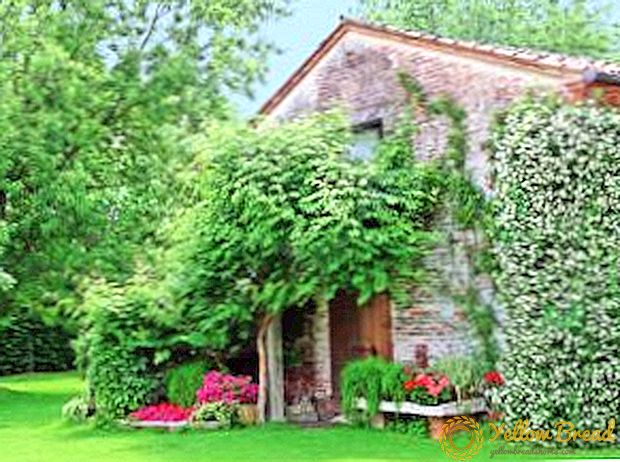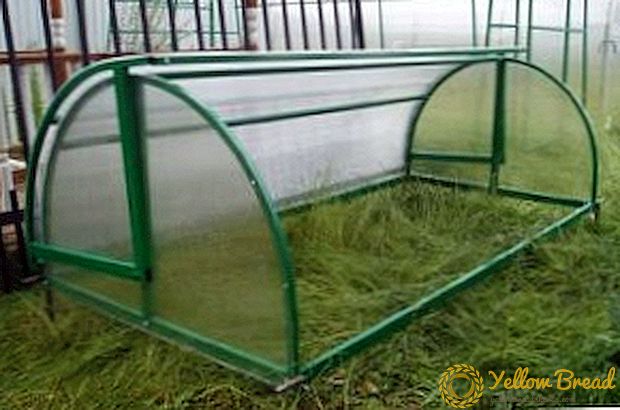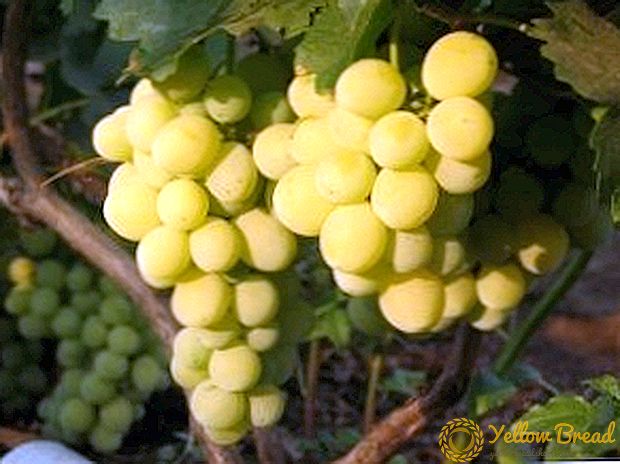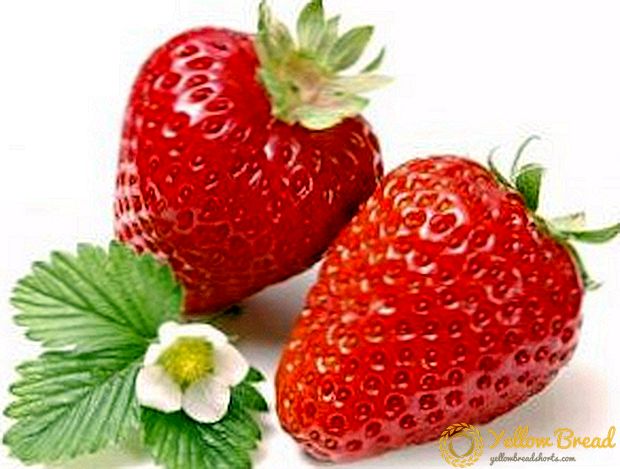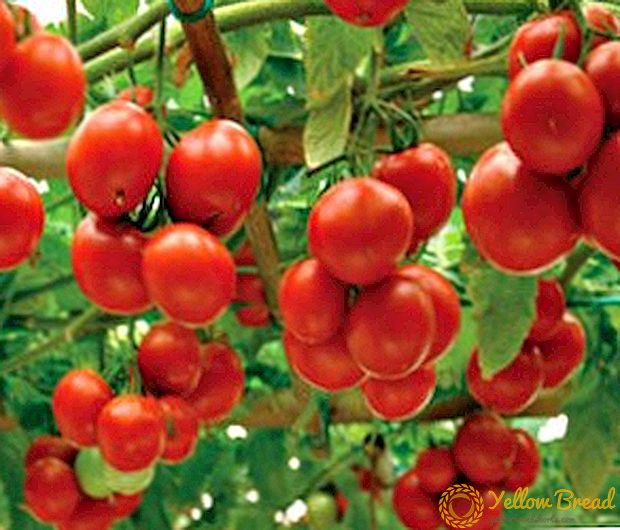 For those who prefer to purchase vegetables that are suspiciously beautiful in order to be natural, products from their own beds, the problem of choosing varieties is well known, because now in specialized stores people literally scatter from the variety of bright envelopes with seeds. Try to grow Tomatoes varieties "collective farm fruitful" - guarantee: you will not regret!
For those who prefer to purchase vegetables that are suspiciously beautiful in order to be natural, products from their own beds, the problem of choosing varieties is well known, because now in specialized stores people literally scatter from the variety of bright envelopes with seeds. Try to grow Tomatoes varieties "collective farm fruitful" - guarantee: you will not regret!
- Description
- Characteristic variety
- Advantages and disadvantages
- Features agrotehnika
Description
The bush of these tomatoes is spreading, medium power, densely and abundantly covered with leaves and low - not higher than 0.6 m.
The tomatoes themselves are round in shape, with smooth skin and dense flesh, appetizing red color and quite impressive size: the average weight of one tomato is from 80 to 100 g or a bit more. According to the generally accepted classification, such a tomato refers to medium fruit (for reference: this group includes tomatoes weighing from 70 to 120 g).

The fruits have a good taste and are suitable for fresh consumption, and for salting or for making juice.
However, any summer resident in the first place is interested not only in the external description of the vegetable, but in its productive qualities, endurance, resistance to natural conditions, diseases and pests, as well as other purely mercantile things. Let's see what the collective farm collective fruitful tomato can boast in this regard.
Characteristic variety
As the name implies, it’s about blessed variety, which will please its owner with a large number of tomatoes. 
Productivity is one of the main indicators by which varieties of certain vegetables are classified. According to average indicators, tomato varieties are considered to be high-yielding, allowing to get at least 3 kg of fruits from one bush.
 Further, according to the instructions on the label, These tomatoes are intended for cultivation in an open ground. It should be noted here that such restrictions in a certain sense are very relative. So, if you plant a vegetable intended for a greenhouse in open ground, this does not mean that it will not grow at all. You just need to take into account the particular climate in your region and make an amendment to the recommendations of the manufacturer. If you want to get a "high-yielding" result as early as possible, especially if you are a farmer and it is important for you to start selling tomatoes before they start growing for everyone on the garden bed, you can try to equip the collective farm variety in the greenhouse.
Further, according to the instructions on the label, These tomatoes are intended for cultivation in an open ground. It should be noted here that such restrictions in a certain sense are very relative. So, if you plant a vegetable intended for a greenhouse in open ground, this does not mean that it will not grow at all. You just need to take into account the particular climate in your region and make an amendment to the recommendations of the manufacturer. If you want to get a "high-yielding" result as early as possible, especially if you are a farmer and it is important for you to start selling tomatoes before they start growing for everyone on the garden bed, you can try to equip the collective farm variety in the greenhouse.Tomatoes of the "Kolkhoz Yield" variety are well tolerated in both arid summer and late spring cold. Fruits reach technical ripeness about a hundred days after planting or a little more, which makes it possible to classify a variety as the average maturity of the varieties (although the manufacturer usually characterizes it as medium-early).Given the average precocity, these tomatoes can be grown both seedling and seedless, immediately sowing seeds in open ground. However, it should be understood that the harvest in the latter case will ripen somewhat later (everything in this world is relative: the middle-ripening variety, lovingly grown from seedlings, has every chance of picking a palm from the speed of ripening from a super early fellow planted directly into the garden bed). 
Advantages and disadvantages
In order to assess the advantages and disadvantages of a variety, there is very little theory (or more precisely, the history of what the so-called "high-yield tomatoes" are).

These tomatoes are the ideal raw material for juices, tomato pastes, canning, but true connoisseurs of delicate taste of ripe tomatoes are better to opt for more noble varieties.
The low growth and compactness of the shrub is also a tribute to the Soviet tradition: there was no talk at all of the manual gartering of tomatoes on the collective farms, and the plant should not fall to the ground under the weight of high branches hung with fruits, since when they touched the ground they were affected by diseases and the party of the people could not allow it.
Durable and fairly dense skin - lack and dignity at the same time. If you do not crush the juice from a tomato, but, say, use it in a salad, the thick skin will have a negative effect on the overall impression of taste. But such tomatoes can be excellently and without losses transported over long distances and stored more than one day. 
Among the advantages of the variety is also noted the simultaneous ripening of fruits, although here a different attitude is possible - in certain cases it is much more valuable for a summer resident to have a bush on the garden from which you can take several fruits all summer, not three kilograms, but at a time.
But here the unconditional advantages of a variety include its resistance to such sworn enemies of the nightshade, as late blight and brown spotting.
Features agrotehnika
Insofar as the variety is not capricious, agrotechnical rules are fairly standard. Soil such tomatoes prefer soils with a high content of sand (light), well fertilized with organic and mineral supplements. 
Both in the first and in the second case, before planting, the seeds should be soaked in special disinfecting preparations (as they say, pickle). For these purposes, a weak solution of potassium permanganate is used or, for lack thereof, hydrogen peroxide (2%). After that, modern technologies suggest keeping seeds for 12 hours in nutrient solutions (they are sold in specialty stores in specialized stores). 
In open ground seedlings are planted at a distance of 30-40 cm from each other with a minimum distance of 0.7 m. If there is a fear that at night the temperature may still fall below a comfortable minimum, it is necessary for the first time to cover young bushes with foil, in this case you can not be afraid to disembark a bit earlier (for the middle band - already in the middle of May).

Shrub "Kolkhoz yield" tomato is recommended to form in one stem. So that the plant does not fall under the weight of fairly large fruits, as it grows, the bush should be tied to a vertical or horizontal support.
Tomato "Collective farm productive" - a good choice for those who do not make high demands on the taste of the fruit and is ready to sacrifice taste in favor of high yields at minimal cost and risk (cold or drought, disease, etc.).This variety can also take pride of place in the garden as a source of good quality raw materials for home canning, including the preparation of tomato juice.

